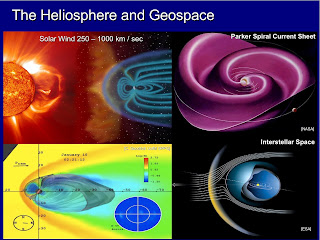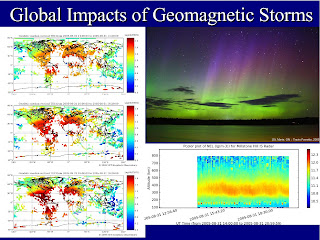
Quick Reminder:
6:00 PM, Wednesday, 24 March
The Large Millimeter Telescope (LMT)
F. Peter Schloerb, University of Massachusetts, Amherst
The Large Millimeter Telescope (LMT) is a 50m-diameter millimeter-wave (mmW) radio telescope that is under construction on the 4600m summit of Sierra Negra, an extinct volcano in the Mexican state of Puebla, by a bi-national collaboration led by the Instituto Nacional de Astrofisica, Optica y Electronica (INAOE) and the University of Massachusetts at Amherst. This telescope has achieved first-light at cm wavelengths and will soon achieve first-light at mmW, with full operation scheduled to begin in 2012.
This talk, presented on behalf of the Large Millimeter Telescope (LMT) project team, describes the status and near-term plans for the telescope and its initial instrumentation. The LMT is a bi-national collaboration between Mexico and the USA, led by the Instituto Nacional de Astrofisica, Optica y Electronica (INAOE) and the University of Massachusetts at Amherst, to construct, commission and operate a 50m-diameter millimeter-wave radio telescope. Construction activities are nearly complete at the 4600m LMT site on the summit of Sierra Negra, an extinct volcano in the Mexican state of Puebla. Full movement of the telescope, under computer control in both azimuth and elevation, has been achieved. First-light at centimeter wavelengths on astronomical sources was obtained in November 2006. Installation of precision surface segments for millimeter-wave operation is underway, with the inner 32m-diameter of the surface now complete.
The project plan was revised in 2008 to proceed to first light with the inner 32m of the antenna while the remaining surface is being completed and prepared for installation. We hope to complete this first light objective in 2010 and carry out some initial scientific work. The remainder of the antenna surface is expected to be completed and installed within about one year after this "first light science."
F. Peter Schloerb is a Professor of Astronomy at the University of Massachusetts at Amherst, where he serves also as Director of the Five College Radio Astronomy Observatory and Project Director for UMass's participation in the Large Millimeter Telescope Project.
The meeting will be held at the MIT Lincoln Laboratory Cafeteria in Lexington, MA. Refreshments will be served at 5:30; the talk will begin at 6:00 pm. The talk is open to the general public.
Directions to Lincoln Laboratory Cafeteria from points north: Take I-95/128 south to exit 31B, Routes 4 & 225 towards Bedford. Stay in right lane and use the right turning lane (0.3 miles) to access Hartwell Ave at first traffic light. Follow Hartwell Ave to the end; take a left onto Wood Street (just before the AFB gate). Lincoln Laboratory entrance is 0.5 miles on right. The entrance to the cafeteria is on the lower level left of the main entrance.
From points south: Take I-95/128 north to exit 30B, Route 2A west. Turn right on to Mass Ave (~0.4 miles). Turn left on to Wood Street (~0.4 miles) Lincoln Laboratory Wood Street entrance is 1 mile on left. The entrance to the cafeteria is on the lower level to the left of the main entrance.
For more information contact John Sandora (jsandora@ll.mit.edu).



